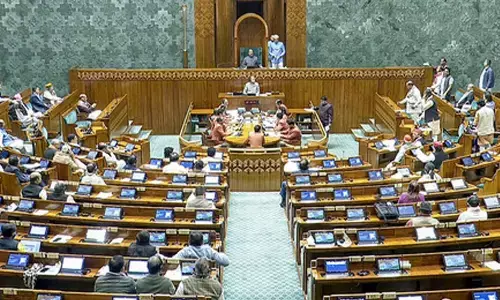Karnataka State biodiversity board should stop environmental mayhem: IISc researcher

Karnataka State biodiversity board should stop environmental mayhem: IISc researcher
- Govt should explore alternative alignment to minimise environmental damages
- Ensure planting of location specific local tree species (saplings at least 2 -3 years old) in the buffer zones
Dr TV Ramachandra from the Centre for Ecological Sciences, Indian Institute of Science (IISc) has stated that the Karnataka Biodiversity Board should intervene and advise the minor irrigation department to ensure the mitigation of the environmental damages which could be caused due to axing of more than 6,000 trees to develop Singanayakanahalli lake.
"As per the environment norms of the country, the project proponent needs to present comparative assessment of alternatives with the environmental impacts. It appears the agency has not looked at alternative alignment options to minimise the damage to the environment. There is a need for the Karnataka Biodiversity Board to intervene and advise the implementing agency to ensure mitigation of the environmental damages," Ramchandra told The Hans India.
He added that in the last Koramangala-Challaghatta (KC Valley Project) the suggestion from him was planting of saplings in the buffer zone of the alignment but no efforts were ever taken by the government department.
"Even in the earlier project (Kolar), we had suggested planting of saplings in the buffer zone of the alignment. But hardly any effort was made in this regard and I am sure the history repeats itself with no due regard to the environmental integrity while implementing large scale projects," he added.
Though Deputy Conservator of Forest, Bengaluru, SS Ravishankar has extended the deadline by 20 days for public to file objections, environmentalists and citizens apprehend colossal environmental damage if trees are axed in such huge numbers.
In respect of Hebbal-Nagawara Valley Project Ramchandra suggested planting of location specific local tree species (saplings at least 2 -3 years old) in the buffer zones (with the appropriate enclosures to prevent damages).
"Explore alternative alignment to minimise the environmental damages," he observed.
The project aims to fill 65 tanks in Bengaluru Urban and Chickballapur. Forest department officials contended that the trees were a major barrier to the project.
While the area faces water scarcity and the project aims at filling tanks environmentalists say that in order to rejuvenate the lake there is no need to cut trees which are imperative to improve the groundwater table.
"Worrying aspect is the presence of nutrients (N and P) and heavy metals in the secondary treated water. Secondary treatment removes chemical ions and large particles. The presence of nutrients and heavy metals will have disastrous health impacts. Groundwater will have nitrates (filling tanks with the partially treated water - containing nutrients and heavy metals). Nitrate is a carcinogen - introduces cancer. Similarly the presence of heavy metals will get transferred to the food chain (vegetables, etc.) which will lead to prevalence of kidney failures and cancer in the society," Ramachandra elaborated.
"I had suggested a low cost option of integrating constructed wetlands for removal of nutrients and also heavy metals. But the suggestion was not considered when the project was implemented in Kolar. A very unfortunate arrogant attitude of implementing agencies," he stated.
One of the other dimensions which the locals near the project site have pointed out is the growing demand of the land.
"The price of the land is humongous. Most of the farmers have sold their lands. So to say that the project will relieve them of their problems is frivolous. The per acre price of the land is growing manifold. Some real-estate giants have exhibited interest in the land around the project site. Across the State the real estate mafia have started encroaching on the pristine lands in such a manner," Mahantesh (name changed), a local resident had told this newspaper earlier.
"Real estate may not survive, if local youth are empowered and if they understand the worth of self employment through integrated farming in a country like ours. Providing water (without any contaminants) will make farmers prosper with multiple crops. This might help in ensuring the youth stay in villages and take up the profitable profession - farming and enterprising youth might set up location specific small scale industries (agro-processing, silk, etc.) which would provide jobs to women and youth. Only worrying aspect is water having contaminants," Ramchandra commented.
Recently, the newspaper broke the story of the senior officials of the Karnataka Tank Conservation and Development Authority (KTCDA) passing the buck on the ground of not knowing the details of the Hebbal-Nagawara Valley Project while the minor irrigation department officials have taken necessary clearance for the project from the authority.















